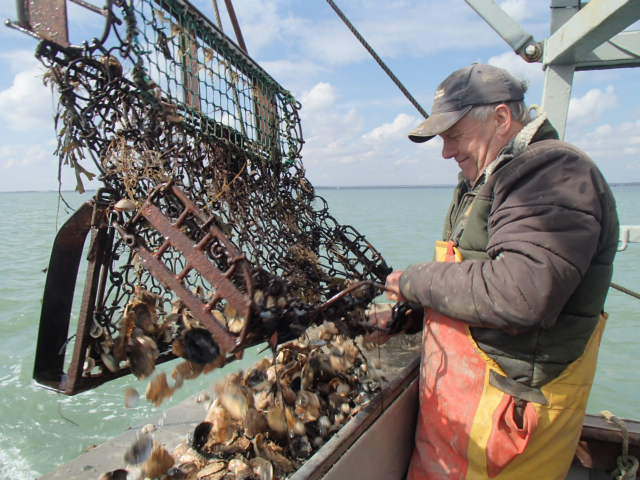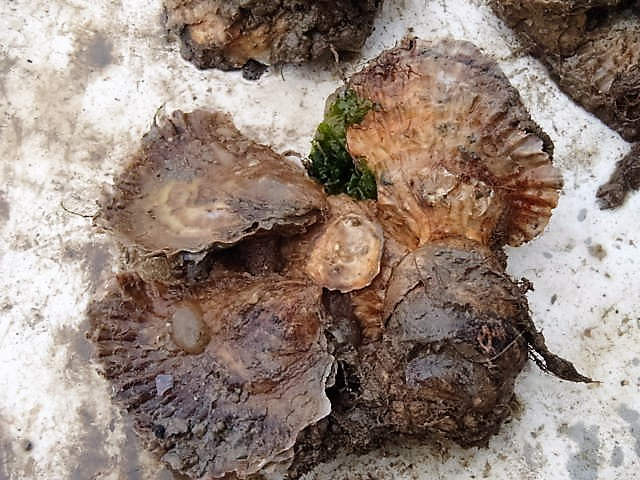 The European flat oyster (ostrea edulis) or native oyster breeds by releasing eggs into the water. A single female produces 100 million eggs annually. The larvae are less than 0.25 mm long and are suspended in the water column for two to three weeks before attaching themselves to the culch as spat, (culch being old oyster shells or stones). They mature to sexual adulthood within a year and spawn as males and the following two to three years as females.
The European flat oyster (ostrea edulis) or native oyster breeds by releasing eggs into the water. A single female produces 100 million eggs annually. The larvae are less than 0.25 mm long and are suspended in the water column for two to three weeks before attaching themselves to the culch as spat, (culch being old oyster shells or stones). They mature to sexual adulthood within a year and spawn as males and the following two to three years as females.
The work of native oyster cultivation includes the clearing of the ground, laying of culch, anticipating spatfall (the settling of the larvae on the culch), dredging, hauling, sorting, relaying, carrying and selling. This is a four or five year cycle, an oyster not reaching maturity until its fifth year. The physical outlay is therefore great but the success lies also in the temperature and quality of the water.
 In the late 1940s and early 1960s very harsh winters decimated the Colchester native oyster stocks and the introduction of Bonamia ostrea (a parasite that can cause lethal infections especially in native oysters) during the 1970s has led to a shortage of good stock. Today the Company is still cultivating Colchester native oysters for resale and relaying. There are locally now only a few oystermen who use boats to dredge for natives and a handful of men who pick up gigas oysters, but the love of the native oyster is still there and it continues to be nurtured. Though, as one local oysterman said, “the first thing a native oyster thinks about doing is dying”. The industry therefore will always remain challenging.
In the late 1940s and early 1960s very harsh winters decimated the Colchester native oyster stocks and the introduction of Bonamia ostrea (a parasite that can cause lethal infections especially in native oysters) during the 1970s has led to a shortage of good stock. Today the Company is still cultivating Colchester native oysters for resale and relaying. There are locally now only a few oystermen who use boats to dredge for natives and a handful of men who pick up gigas oysters, but the love of the native oyster is still there and it continues to be nurtured. Though, as one local oysterman said, “the first thing a native oyster thinks about doing is dying”. The industry therefore will always remain challenging.
Colchester Native Oysters available from: